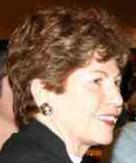
Some days it just all comes together, and it feels soooo good! A couple of days ago I got a call from an agent who works at a retirement community in
Florida. She was hoping to improve a situation for sellers who are moving into the community down there. This agent has always referred to someone else in the
Baltimore area, but these sellers were not impressed by his service and lack of follow up - the house had already been on the market for 92 days. The agent in
Florida found me on the internet, I think because of an article I wrote about
Pikesville.
That's right, by sharing information about my area I attracted attention from hundreds of miles away. Anyway, I told the Florida agent that I'm booked solid, but then learned that the agent has known these sellers for three years, that they've already bought and settled on their new home in a 55+ community called The Villages, just waiting to sell their home in Pikesville so they can resign their jobs and move on. I could imagine the pressure on the sellers, and so I called them just to touch base.
 Well, the phone call turned into a visit when the sellers and I connected in several ways. First, they are both RNs, and I talked about how I approach real estate as I did nursing. Find out what the "patient" needs, and make it better. The three of us agreed that we work for the satisfaction of how we continue to heal the situation. By the time the evening was over, I had a signed listing, and had measured and photographed the interior. It's just too bad they had a stager come in who made them remove a lot of their stuff and send it to storage…like the dining room furniture! Wonder what was he thinking?
Well, the phone call turned into a visit when the sellers and I connected in several ways. First, they are both RNs, and I talked about how I approach real estate as I did nursing. Find out what the "patient" needs, and make it better. The three of us agreed that we work for the satisfaction of how we continue to heal the situation. By the time the evening was over, I had a signed listing, and had measured and photographed the interior. It's just too bad they had a stager come in who made them remove a lot of their stuff and send it to storage…like the dining room furniture! Wonder what was he thinking?
The next morning I was back for the outside photos, got
the listing into the MLS, and sent the photos to my computer tech who put them up on the my website. The
listing blog followed right after. Whew! I made up flyers and delivered them the next day – the sellers love the flyers, love seeing their house on the website, and love that they can google their address and the property comes up number one. I have to admit, I think it's pretty neat also.
 What was that second connection we found? Of course, one of the sellers is a Type E personality right up in the Mystic range. Guess I shouldn't be surprised that this might have been my fastest listing time ever from phone call to MLS. Hoping to make it a real record breaker by closing that circle with a contract soon! Stay tuned….
What was that second connection we found? Of course, one of the sellers is a Type E personality right up in the Mystic range. Guess I shouldn't be surprised that this might have been my fastest listing time ever from phone call to MLS. Hoping to make it a real record breaker by closing that circle with a contract soon! Stay tuned….
Labels: baltimore real estate, Pikesville, Type E
 Most Baltimoreans have heard of Dickeyville as "somewhere west of the city." When you look at photos of the Victorian architecture, traditional old church, and white picket fences, it's easy to believe this historic neighborhood sits out in the country somewhere.
Most Baltimoreans have heard of Dickeyville as "somewhere west of the city." When you look at photos of the Victorian architecture, traditional old church, and white picket fences, it's easy to believe this historic neighborhood sits out in the country somewhere. 















